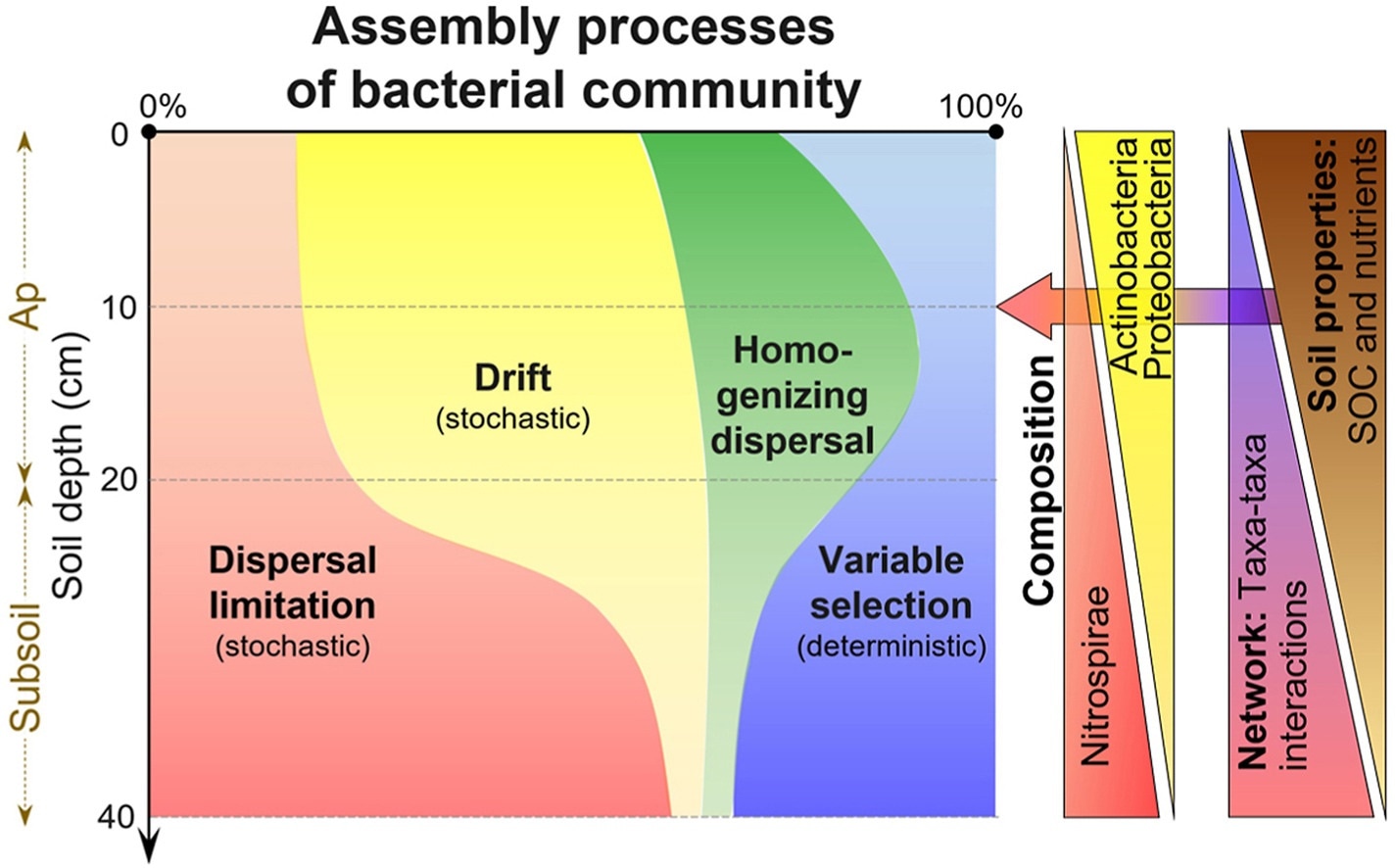The bacterial communities present in the soil play a vital role in carbon (C) and nutrient cycling. However, it is not yet clear how geographic differences in bacterial community composition rely on soil depth, the processes underlying community assembly, and the major factors.

Depth effects on bacterial community assembly processes in paddy soils. Image Credit: Image by Weitao Li
Scientists from the Xishuangbanna Tropical Botanical Garden (XTBG) of the Chinese Academy of Sciences and the Institute of Soil Science analyzed bacterial community composition and its assembly mechanism in soils from 26 rice fields in subtropics up to 40 cm depth. The research was published in the Soil Biology & Biochemistry journal.
The scientists identified that nutrient contents greatly declined from topsoil to subsoil, particularly the available phosphorus content. The topsoil’s bacterial diversity was also greater than that of the subsoil. The phyla Actinobacteria and Proteobacteria reduced with increasing soil depth and the phyla Nitrospirae and Chloroflexi revealed the opposite tendency.
The average degree, linkage density, average clustering coefficient, and edges, increased with soil depth, signifying that the taxon-taxon co-occurrence network becomes much complex and the associations were much connected.
Network analysis revealed that with increased soil depth, the complexity of the bacterial community networks and the intensity of taxa-taxa interactions increased. The high modularity of the bacterial network in the topsoil is linked with better environmental perturbations to retain the robustness of the microbial community composition.
The taxon-environment network analysis revealed that pH and soil texture were highly correlated with bacterial taxa in the topsoil (0–20 cm), while the subsoil’s soil nutrients were more significant for the bacterial community.
In subtropical paddy soil, stochastic mechanisms were dominant in bacterial community assembly up to 40 cm, and more random at 10–20 cm. Drift was dominant in the topsoil and dispersal was highly restricted in the subsoil.
To our knowledge, this is the first study evaluating the networks and assemblages of bacterial communities depending on soil depths at a large geographical scale.”
Weitao Li, Study First Author, Chinese Academy of Sciences
Source:
Journal reference:
Li, W., et al. (2022) Depth effects on bacterial community assembly processes in paddy soils. Soil Biology and Biochemistry. doi.org/10.1016/j.soilbio.2021.108517.